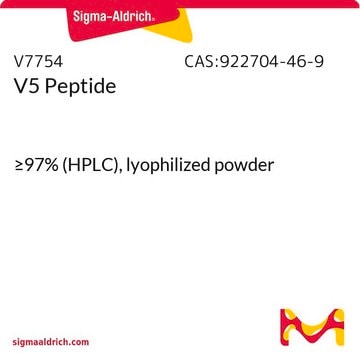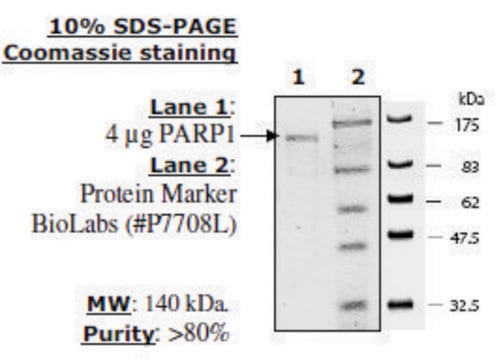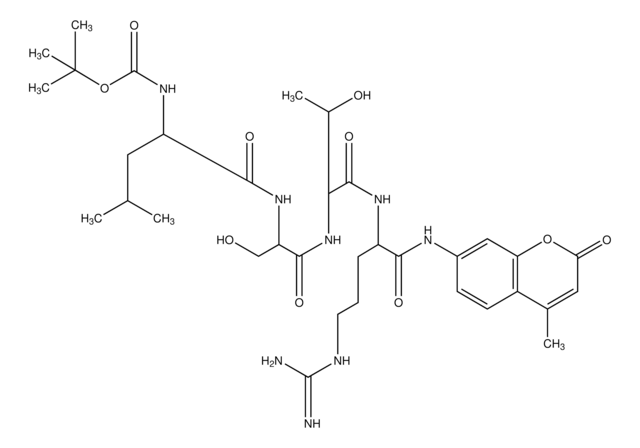SRP8023
PARG human
recombinant, expressed in Sf21 cells, His tagged, >95% (SDS-PAGE)
Sinônimo(s):
FNDC5 (cleaved), Poly(ADP-ribose) glycohydrolase
About This Item
Produtos recomendados
fonte biológica
human
recombinante
expressed in Sf21 cells
etiqueta
His tagged
Ensaio
>95% (SDS-PAGE)
forma
liquid
peso molecular
~110 kDa by SDS-PAGE
embalagem
pkg of 2 μg
concentração
≥0.2 mg/mL
técnica(s)
cell based assay: suitable
cor
clear
solubilidade
water: soluble
nº de adesão UniProt
Condições de expedição
dry ice
temperatura de armazenamento
−70°C
Informações sobre genes
human ... PARG(8505)
Descrição geral
Aplicação
Ações bioquímicas/fisiológicas
forma física
Outras notas
Palavra indicadora
Danger
Frases de perigo
Declarações de precaução
Classificações de perigo
Repr. 1B
Código de classe de armazenamento
6.1D - Non-combustible acute toxic Cat.3 / toxic hazardous materials or hazardous materials causing chronic effects
Classe de risco de água (WGK)
WGK 1
Ponto de fulgor (°F)
Not applicable
Ponto de fulgor (°C)
Not applicable
Certificados de análise (COA)
Busque Certificados de análise (COA) digitando o Número do Lote do produto. Os números de lote e remessa podem ser encontrados no rótulo de um produto após a palavra “Lot” ou “Batch”.
Já possui este produto?
Encontre a documentação dos produtos que você adquiriu recentemente na biblioteca de documentos.
Nossa equipe de cientistas tem experiência em todas as áreas de pesquisa, incluindo Life Sciences, ciência de materiais, síntese química, cromatografia, química analítica e muitas outras.
Entre em contato com a assistência técnica









